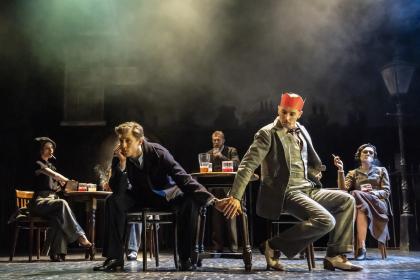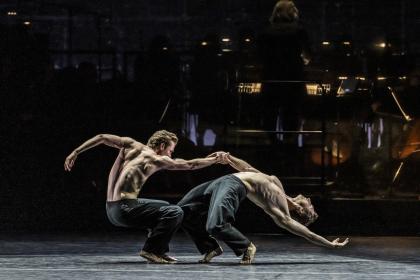Dance reviews, news & interviews
'We are bowled over!' Thank you for your messages of love and support
Friday, 14 November 2025
We are bowled over!
Giselle, National Ballet of Japan review - return of a classic, refreshed and impeccably danced
Saturday, 26 July 2025
A new Giselle? Not quite: the production that Japan’s national company has brought over for its first British visit isn’t a radical Akram Khan-style makeover. What it offers is a tasteful refreshing of a great classic, like meeting an old friend with a new haircut.
Subscribe to theartsdesk.com
Thank you for continuing to read our work on theartsdesk.com. For unlimited access to every article in its entirety, including our archive of more than 15,000 pieces, we're asking for £5 per month or £40 per year. We feel it's a very good deal, and hope you do too.
To take a subscription now simply click here.
And if you're looking for that extra gift for a friend or family member, why not treat them to a theartsdesk.com gift subscription?
Footnote: a brief history of dance in Britain
Britain's reputation as one of the world's great ballet nations has been swiftly won, as home-grown classical ballet started here only in the 1930s. Yet within 30 years the Royal Ballet was recognised as the equal of the greatest and oldest companies in France, Russia or Italy. Now the extraordinary range in British dance from classical ballet to contemporary dance-theatre, from experimental new choreography in small spaces to mass arena-ballet spectaculars, can't be matched in the US or Russia, where nothing like the Arts Council subsidy system exists to encourage new work.
Fonteyn_OndineWhile foreign stars have long been adored by British audiences, from Anna Pavlova and Rudolf Nureyev to Sylvie Guillem, the British ballet and dance movements were offspring of the movement towards a national subsidised theatre. This was first activated in the Thirties by Lilian Baylis and Ninette de Valois in a tie-up between the Old Vic and Sadler's Wells, and led to the founding of what became the Royal Ballet, English National Opera and the National Theatre. From 1926 Marie Rambert's Ballet Club operated out of the tiny Mercury Theatre, Notting Hill, a creative crucible producing early stars such as choreographer Frederick Ashton and ballerina Alicia Markova and which eventually grew into Ballet Rambert and today's Rambert Dance. From all these roots developed Sadlers Wells Theatre Ballet (now Birmingham Royal Ballet), London Festival Ballet (now English National Ballet), and Western Theatre Ballet which became Scottish Ballet.
Margot Fonteyn's dominance in the post-war ballet scene (pictured in Ashton's Ondine) and the granting of a Royal charter in 1956 to the Royal Ballet and its school brought the "English ballet" world renown, massively increased when Soviet star Rudolf Nureyev defected from the Kirov Ballet in 1961 and formed with Fonteyn the most iconic partnership in dance history.
The Sixties ballet boom was complemented by the introduction of American abstract modern dance to London, and a mushrooming of independent modern choreographers drawing on fashion and club music (Michael Clark), art and classical music (Richard Alston), movies (Matthew Bourne) and science (Wayne McGregor). Hip-hop, salsa and TV dance shows have recently given a dynamic new twist to contemporary dance. The Arts Desk offers the fastest overnight reviews and ticket booking links for last night's openings, as well as the most thoughtful close-up interviews with major creative figures and performers. Our critics include Ismene Brown, Judith Flanders, David Nice, Matt Wolf and James Woodall
Advertising feature
You can stop theartsdesk.com closing!
We urgently need financing to survive. Our fundraising drive has thus far raised £49,000 but we need to reach £100,000 or we will be forced to close. Please contribute here: https://gofund.me/c3f6033d
And if you can forward this information to anyone who might assist, we’d be grateful.

latest in today
 'We are bowled over!' Thank you for your messages...
'We are bowled over!' Thank you for your messages...


































